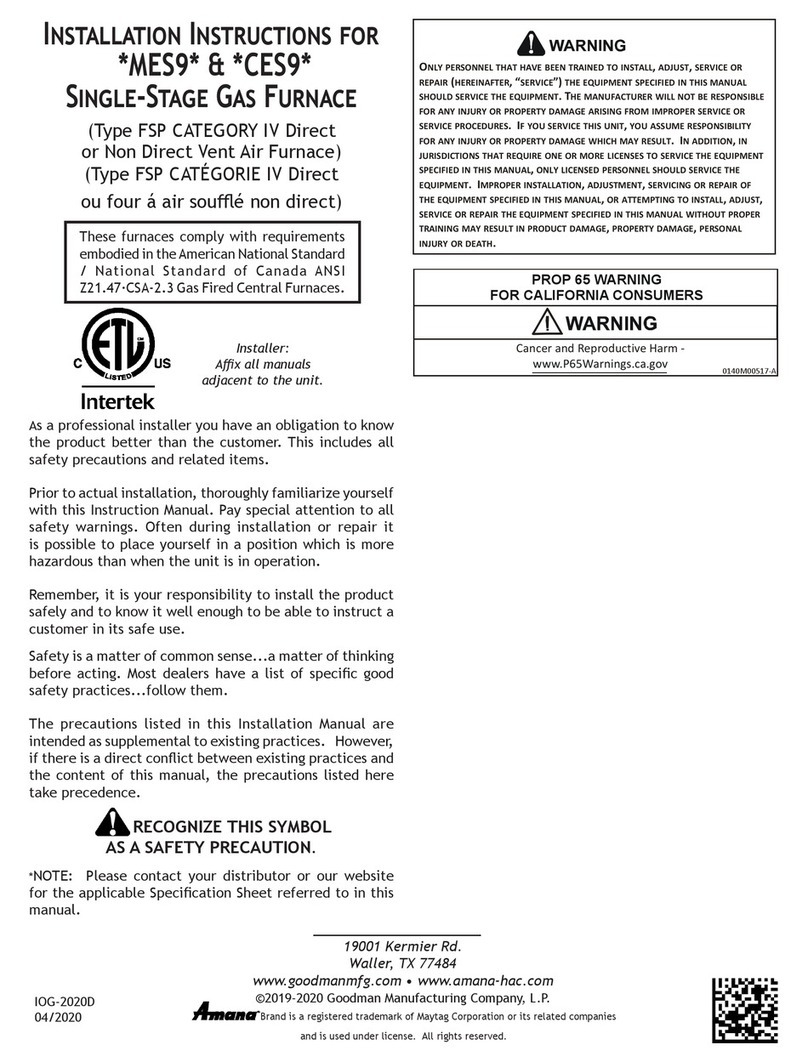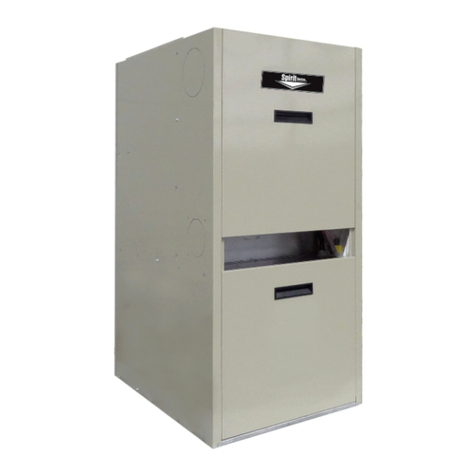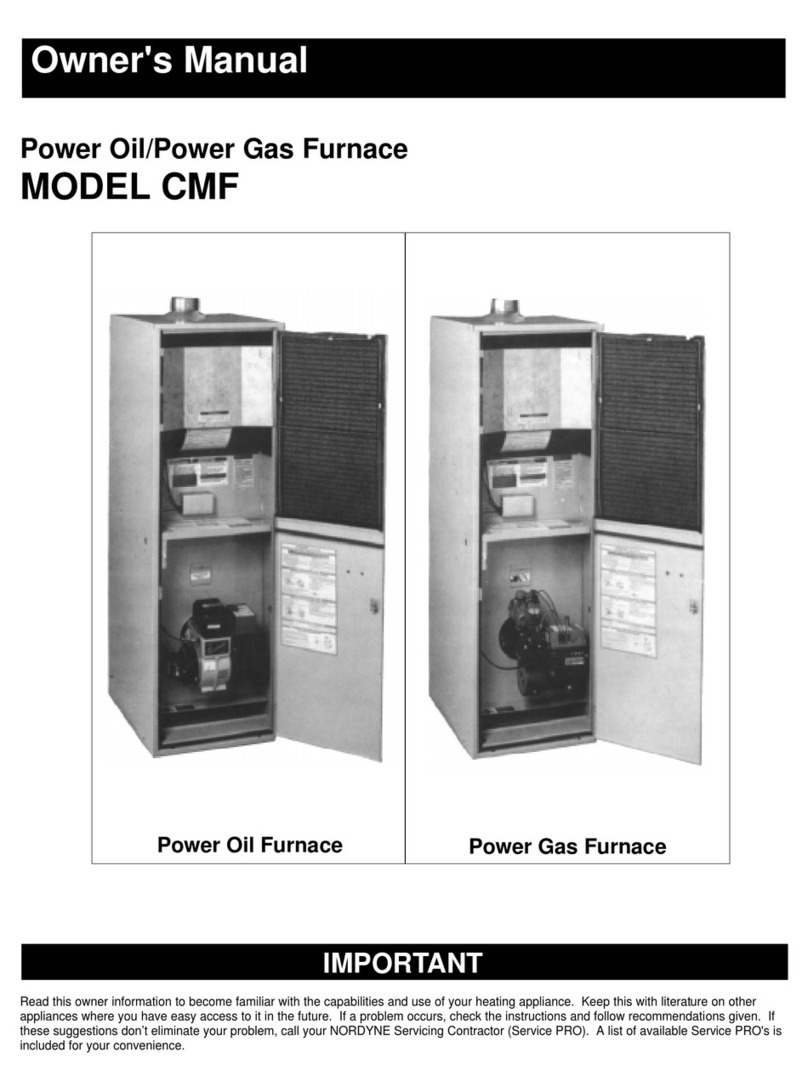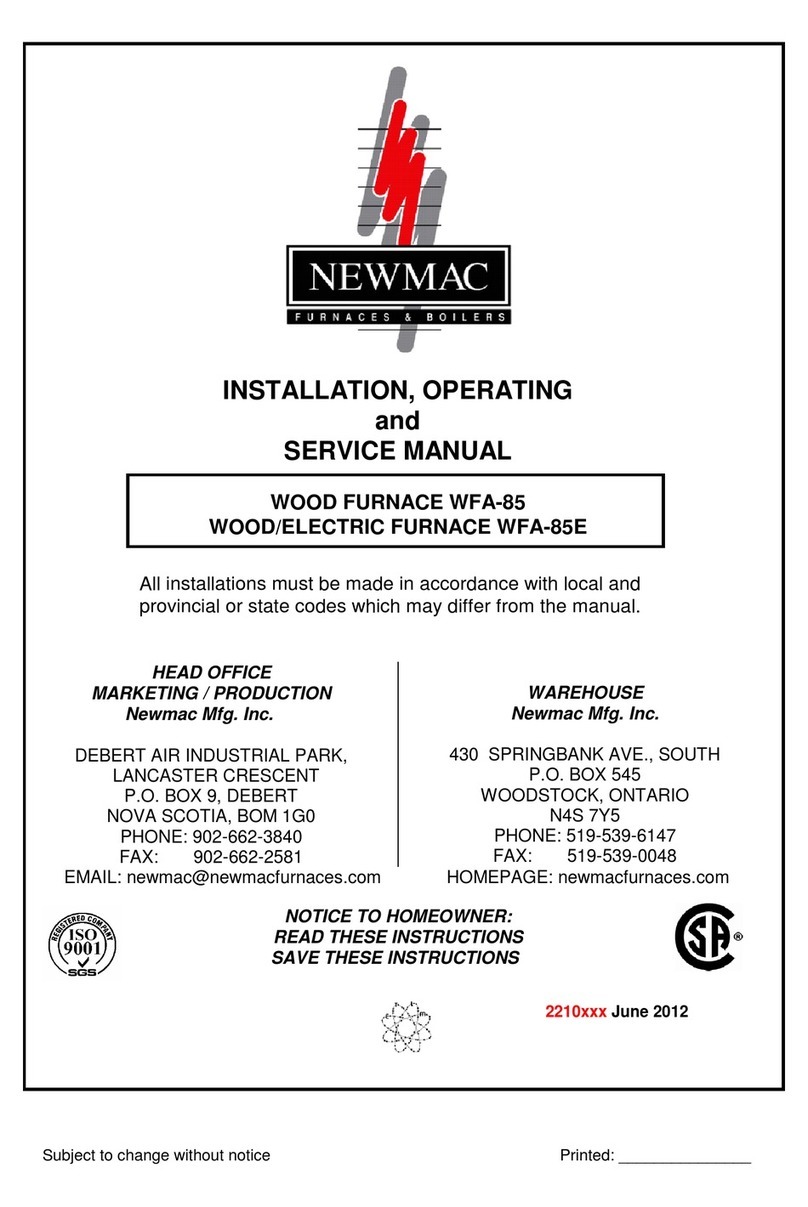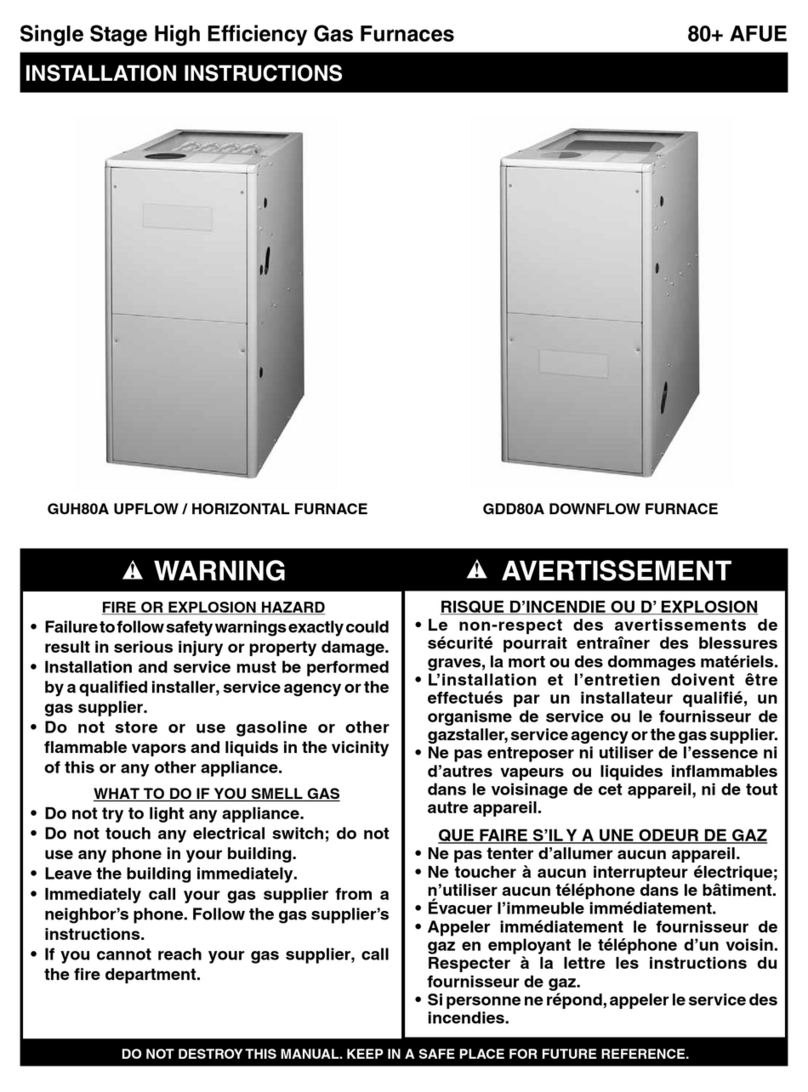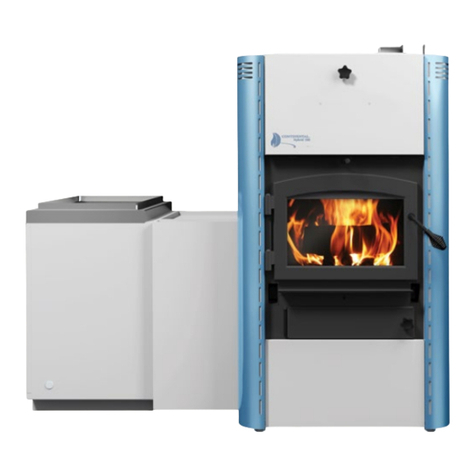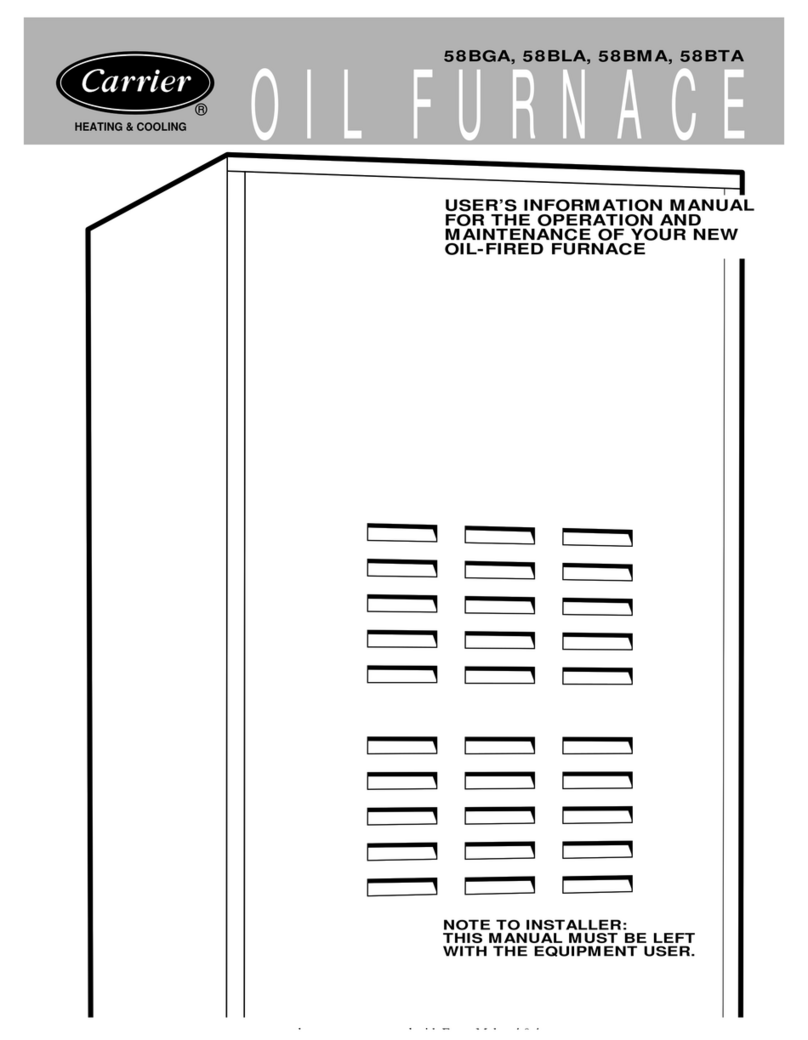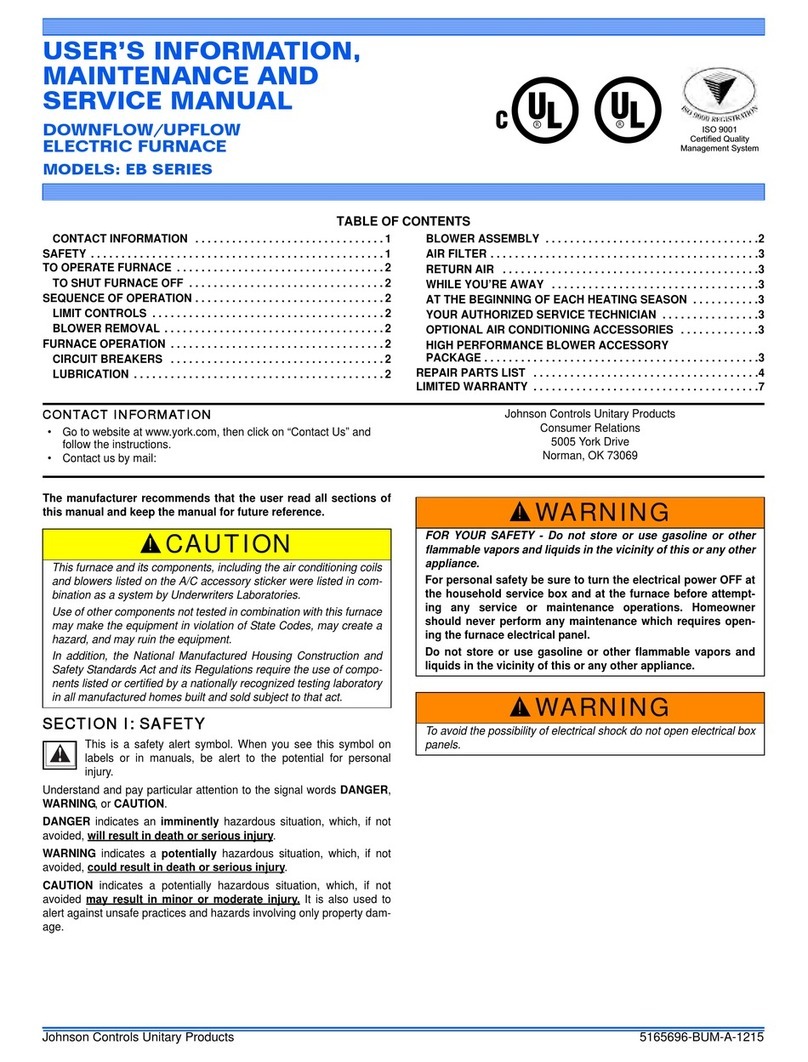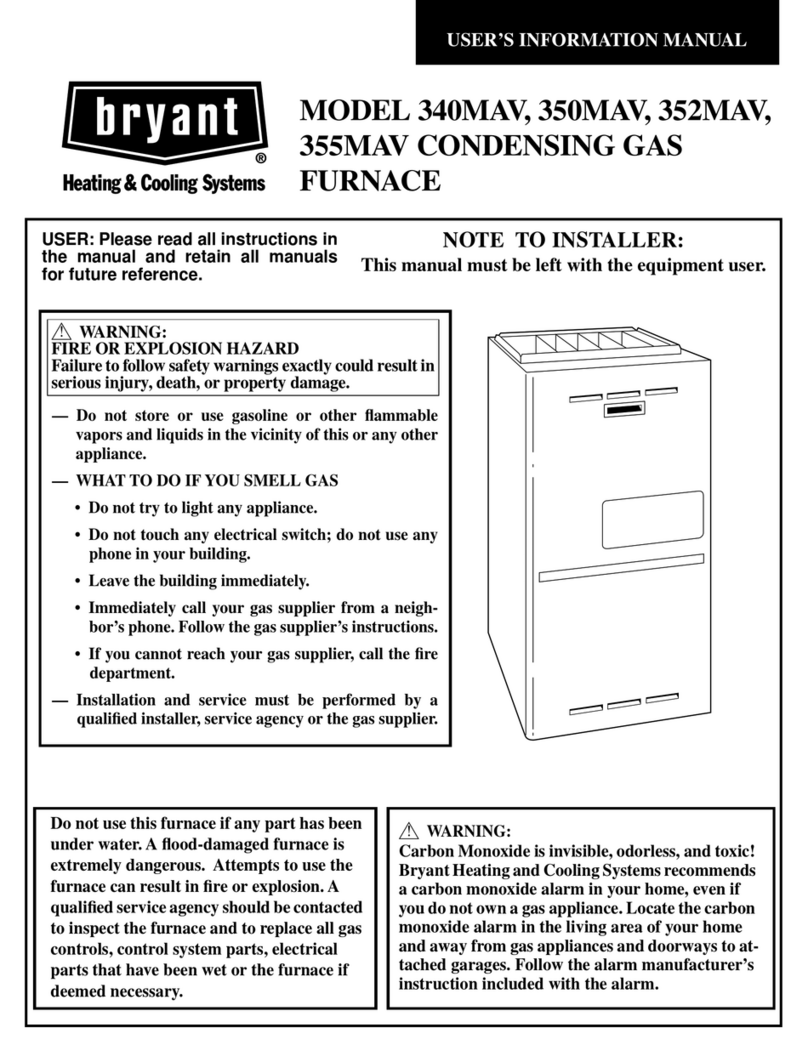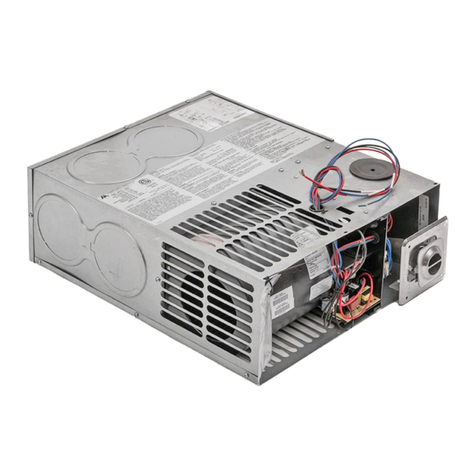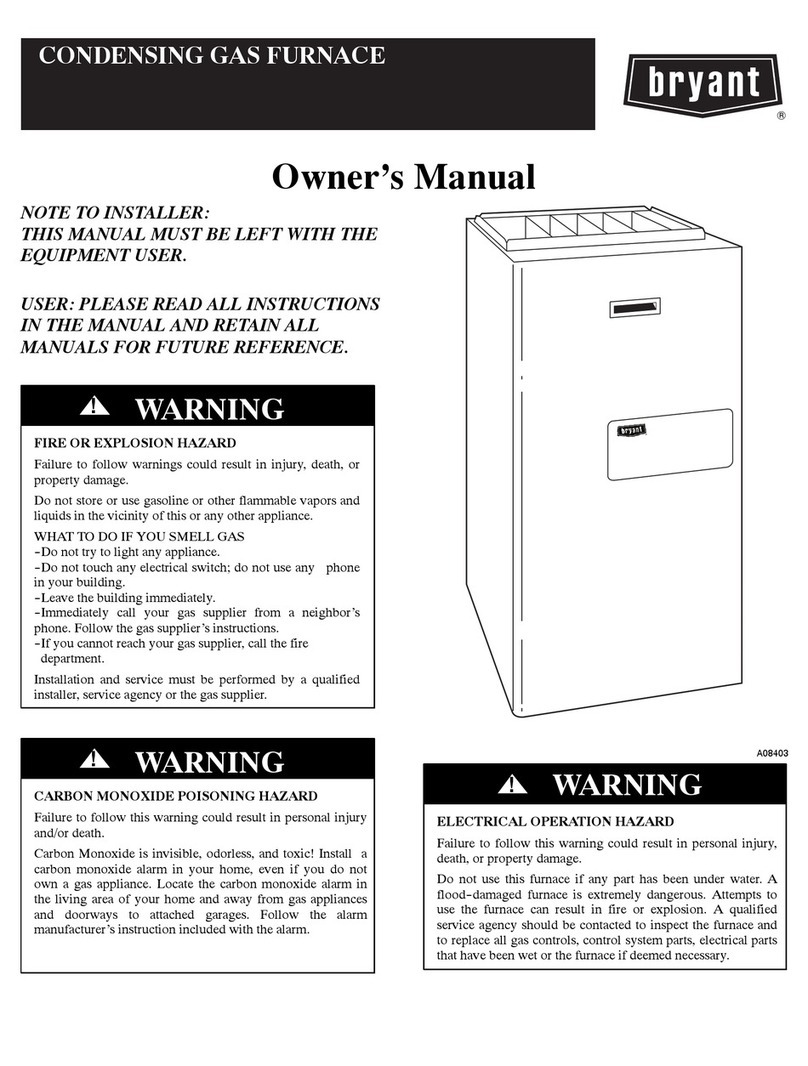
4
Rules for safe installation and operation
Read these rules and the instructions carefully. Failure to follow them will cause a
hazard that could result in death, serious bodily injury, and/or property damage.
Your Furnace is designed to be installed in a parallel air ow arrangement with a gas or oil-
red forced air upow-type central furnace, or it may be installed as a central furnace.
1. Check your local codes. The installation must comply
with their rulings.
2. Do not install this furnace in a mobile home or trailer.
3. Always connect this furnace to a chimney and vent
to the outside. Never vent to another room or inside
a building.
4. Do not connect this furnace to an aluminum Type
B gas vent. This is not safe and is prohibited by
the National Fire Protection Association Code. This
furnace requires a masonry or Listed Factory Built
Chimney for residential type or Building Heating
Appliance Chimney. Use a 6" diameter chimney or
larger, that is high enough to give a good draft.
5. Be sure that if a masonry chimney is used, it is safely
constructed and in good repair. Have the chimney
inspected by the Fire Department or an inspector.
6. Inspect chimney connector and chimney before and
frequently during the heating season for any deposit
of creosote or soot which must be removed.
7. Provide air for combustion into the room where the
furnace is located. If the intake is not in the same
room, air must have free access to the room.
8. CAST IRON PARTS MUST BE "SEASONED" TO
AVOID CRACKING, BUILD ONLY SMALL FIRES
ON FIRST USE.
9. To prevent injury, do not allow anyone to use this
furnace who is unfamiliar with the correct operation
of the furnace.
10. For further information on using your furnace safely,
obtain a copy of the National Fire Protection Asso-
ciation (NFPA) publication "Chimney's, Fireplaces
and Solid Fuel Burning Appliances" NFPA 211. The
address of the NFPA is Batterymarch Park, Quincy,
MA 02269.
11. Keep the ashpit section free of excess ashes. Do
not allow ashes to stack higher than the sides of the
ash pan.
12. Disposal ofAshes –Ashes should be placed in a steel
container with a tight tting lid and moved outdoors
immediately. The closed container of ashes should be
placed on a noncombustible oor or on the ground,
well away from combustible materials, pending nal
disposal. If the ashes are disposed of by burial in
soil or otherwise locally dispersed, they should be
retained in the closed container until all cinders have
thoroughly cooled. Other waste shall not be placed
in this container.
13. CAUTION- The special paints used on your furnace
may give off some smoke while they are curing during
rst few res., Build small res at rst. The metal
used in construction of the furnace and duct work has
a light coating of oil. This could give off smoke and/
or odor from registers when furnace is used for the
rst time. This should disappear after a short period
of time. Once this burn-off has occurred, it should
not reoccur.
14. CARING FOR PAINTED PARTS- This furnace has
a painted outside jacket, which is durable, but it will
not stand rough handling or abuse. When installing
your furnace, use care in handling. Clean with soap
and warm water when furnace in not hot. DO NOT
use any acids or scouring soap, as these wear and
dull the nish. DISCOLORATION WILL OCCUR
IF THE FURNACE IS OVERHEATED. FOLLOW
OPERATING INSTRUCTIONS CAREFULLY.
15. Keep the feed and ash doors closed at all times
except while tending the furnace.
16. WARNING: RISK OF FIRE - Inspect and clean ues
and chimney regularly
CAUTION: Hot surfaces
CAUTION: Keep children away
CAUTION: Do not touch during operation
CAUTION: Maximum draft marked on nameplate
CAUTION
GASES THAT ARE DRIVEN FROM FRESH COAL MUST
BE BURNED OR THEY WILL ACCUMULATE AND EX-
PLODE. NEVER SMOTHER A FIRE WHEN ADDING
FRESH COAL.
CAUTION
DO NOT OPERATE WITH THE FEEDAND/ORASH DOOR
OPEN. THIS FURNACE IS DESIGNED FOR THERMO-
STATIC OPERATION. OPERATION WITHANY OF THESE
DOORS OPEN WILL OVERHEAT AND DAMAGE THE
FURNACE.
CAUTION
NEVER USE GASOLINE, GASOLINE-TYPE LANTERN
FUEL, KEROSENE, CHARCOAL LIGHTER FLUID, OR
FLAMMABLE LIQUIDS TO START OR "FRESHEN UP"
A FIRE IN THE FURNACE.
WARNING
NEVER STORE FLAMMABLE LIQUIDS, ESPECIALLY
GASOLINE, IN THE VICINITY OF THE FURNACE.




















